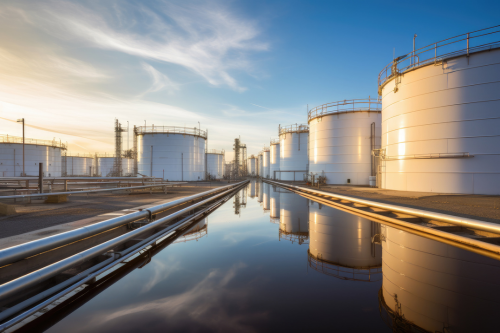Refinery tank cleaning: Processes and Maintenance

Refinery tank cleaning is a critical process in the maintenance and operation of oil refineries. This process involves the removal of hydrocarbon residues, sludge, and other contaminants from storage tanks used in the refining process. Effective refinery tank cleaning is essential for ensuring the purity of the refined product, maintaining storage capacity, and ensuring the safety and efficiency of refinery operations.
The importance of refinery tank cleaning
The importance of refinery tank cleaning cannot be overstated. Over time, sediment and sludge can accumulate at the bottom of tanks, reducing their storage capacity and potentially contaminating the stored oil. This sediment can also cause corrosion and damage to the tank, leading to costly repairs and potential environmental hazards. Therefore, regular and thorough cleaning of these tanks is a necessity for any refinery.
Refinery tank cleaning process
The process of refinery tank cleaning typically involves several steps. Initially, the tank is taken out of service and isolated from the rest of the refinery. Then, any remaining oil is drained from the tank, often being transferred to another tank or processed for removal of impurities. Following this, the cleaning process begins, which can vary depending on the size of the tank and the type of residue present.
One common method of refinery tank cleaning is manual cleaning, where workers enter the tank and clean it using tools and chemicals. This method can be effective but poses significant safety risks due to the potential for exposure to harmful chemicals and gases. As a result, many refineries are moving towards automated cleaning systems. These systems use robotic devices or high-pressure water jets to clean the tanks, minimising the need for human entry and reducing safety risks.
Another aspect of refinery tank cleaning is waste management. The sludge and residue removed from the tanks often contain hazardous materials that must be handled and disposed of properly. Refineries must comply with environmental regulations regarding the disposal of these materials, ensuring that the cleaning process does not harm the environment.
Innovations in refinery tank cleaning technology have led to more efficient and safer cleaning methods. For example, some refineries now use non-entry tank cleaning systems, which eliminate the need for workers to enter the tank. These systems can include automated robots or other mechanical devices that clean the tank from the outside. Additionally, advances in chemical cleaning agents have made it possible to dissolve and remove residues more effectively, reducing the time and effort required for cleaning.
Refinery tank cleaning also plays a crucial role in the maintenance of the refinery’s infrastructure. Regular cleaning helps to prevent corrosion and wear on the tanks, extending their lifespan and reducing the likelihood of leaks or other failures. This maintenance is essential for the safe and efficient operation of the refinery, as well as for the prevention of environmental incidents.
Speak to our team about refinery and oil tank cleaning services
Refinery tank cleaning is a vital process in the oil refining industry. It ensures the purity of the refined products, maintains the storage capacity of the tanks, and prevents environmental and safety hazards.
With the advancement of technology, refinery tank cleaning has become more efficient and safer, but it remains a critical aspect of refinery operations. Regular and thorough cleaning of refinery tanks is essential for the smooth and safe operation of any oil refinery.
If you are looking for a reliable oil tank cleaning provider, our team are here to assist you. Simply fill in our contact form and a member of our team will be in touch as soon as possible.
